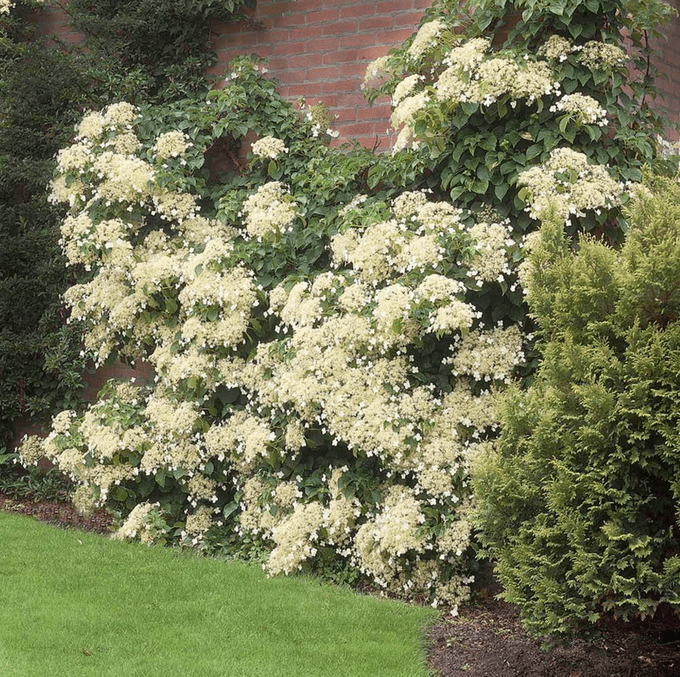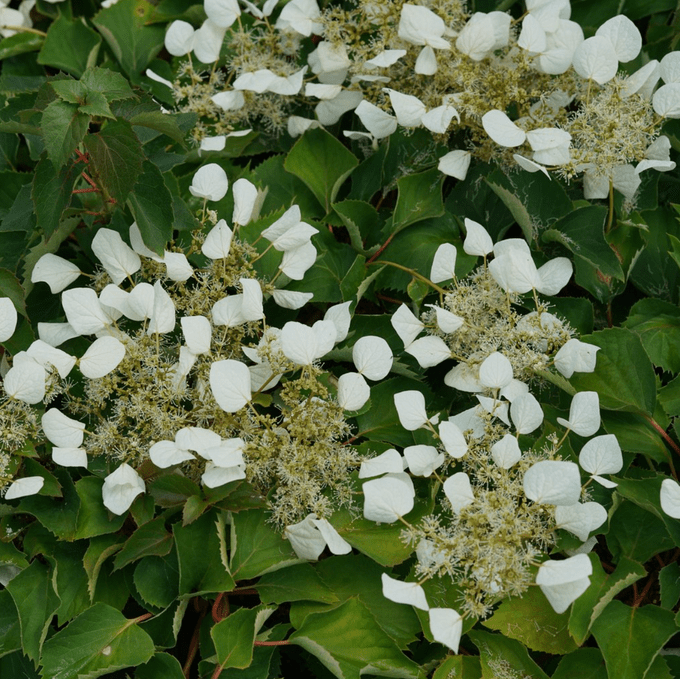How to Grow a Climbing Hydrangea Vine
Updated: Apr. 13, 2023
You may think you know every type of hydrangea, but have you ever heard of a climbing hydrangea? See if this flowering vine is good for your yard.
Our editors and experts handpick every product we feature. We may earn a commission from your purchases.
If you love the beauty of hydrangea bushes in bloom, a climbing hydrangea vine might sound like your dream come true! Find you how to care for this vining plant and see if it’s a good choice for your landscape.
Hydrangea not blooming? Here’s what to do.
Climbing Hydrangea Care

- Common name: Climbing hydrangea
- Scientific name: Hydrangea anomala subsp. petiolaris
- Zones: 4 to 8
- Light needs: Full sun to partial shade, dislikes heat and humidity
- Water needs: Water deeply and regularly until established
- Soil: Rich, well-draining soils
- Size: 30 to 60 feet long, 5 to 6 feet wide
Climbing hydrangeas start out slow and shrubby. Be patient. Once established, they grow vigorously—one plant can rapidly cover a multi-story house or structure. Depending on your viewpoint, this can be a positive or a negative trait. In the right conditions, the vines can exceed 30 feet in length. Though fast-growing, they are not considered to be invasive. Avoid applying high nitrogen fertilizers that encourage stem growth but discourage flowering.
Look for vigorous green foliage and white lacecap flower clusters in May, June or July, similar to other types of hydrangeas. Like bigleaf and mountain hydrangeas, they bloom on old wood. Yellow foliage and reddish peeling bark offer fall and winter interest.
In order to keep vining plants like climbing hydrangeas looking great, use pole pruners for hard-to-reach spaces. Learn when to prune hydrangeas for big, showy blooms.
These plants offer a striking solution for unappealing fences and bare exterior walls. With their clinging habit, climbing hydrangea vines don’t need a trellis for support. The roots will not damage brick, wood or other building materials. Lush leafy vines provide cooling shade in summer; after the leaves fall off, the sun’s warmth shines through.
According to North Carolina State Extension, these plants are native to Japan, Korea and China. They dislike intense heat and humidity and will benefit from afternoon shade in southern growing zones.
Chinese snowball bush vs hydrangea: what’s the difference?
Other Varieties to Grow

Hydrangea barbara, another vining plant commonly known as climbing hydrangea, is native to the southeastern United States, but it is only cold hardy to planting zone 6. Schizophragma hydrangeoides, known as false hydrangea vine or Japanese hydrangea vine, is faster to get established and produce flowers.
Next, discover hydrangea facts that even expert gardeners don’t know.




















